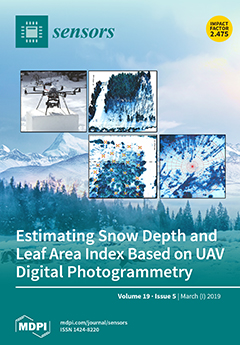The photon path length probability density function-simultaneous (PPDF-S) algorithm is effective for retrieving column-averaged concentrations of carbon dioxide (XCO
2) and methane (XCH
4) from Greenhouse gases Observing Satellite (GOSAT) spectra in Short Wavelength InfraRed (SWIR). Using this method, light-path modification
[...] Read more.
The photon path length probability density function-simultaneous (PPDF-S) algorithm is effective for retrieving column-averaged concentrations of carbon dioxide (XCO
2) and methane (XCH
4) from Greenhouse gases Observing Satellite (GOSAT) spectra in Short Wavelength InfraRed (SWIR). Using this method, light-path modification attributable to light reflection/scattering by atmospheric clouds/aerosols is represented by the modification of atmospheric transmittance according to PPDF parameters. We optimized PPDF parameters for a more accurate XCO
2 retrieval under aerosol dense conditions based on simulation studies for various aerosol types and surface albedos. We found a more appropriate value of PPDF parameters referring to the vertical profile of CO
2 concentration as a measure of a stable solution. The results show that the constraint condition of a PPDF parameter that represents the light reflectance effect by aerosols is sufficiently weak to affect XCO
2 adversely. By optimizing the constraint, it was possible to obtain a stable solution of XCO
2. The new optimization was applied to retrieval analysis of the GOSAT data measured in Western Siberia. First, we assumed clear sky conditions and retrieved XCO
2 from GOSAT data obtained near Yekaterinburg in the target area. The retrieved XCO
2 was validated through a comparison with ground-based Fourier Transform Spectrometer (FTS) measurements made at the Yekaterinburg observation site. The validation results showed that the retrieval accuracy was reasonable. Next, we applied the optimized method to dense aerosol conditions when biomass burning was active. The results demonstrated that optimization enabled retrieval, even under smoky conditions, and that the total number of retrieved data increased by about 70%. Furthermore, the results of the simulation studies and the GOSAT data analysis suggest that atmospheric aerosol types that affected CO
2 analysis are identifiable by the PPDF parameter value. We expect that we will be able to suggest a further improved algorithm after the atmospheric aerosol types are identified.
Full article






